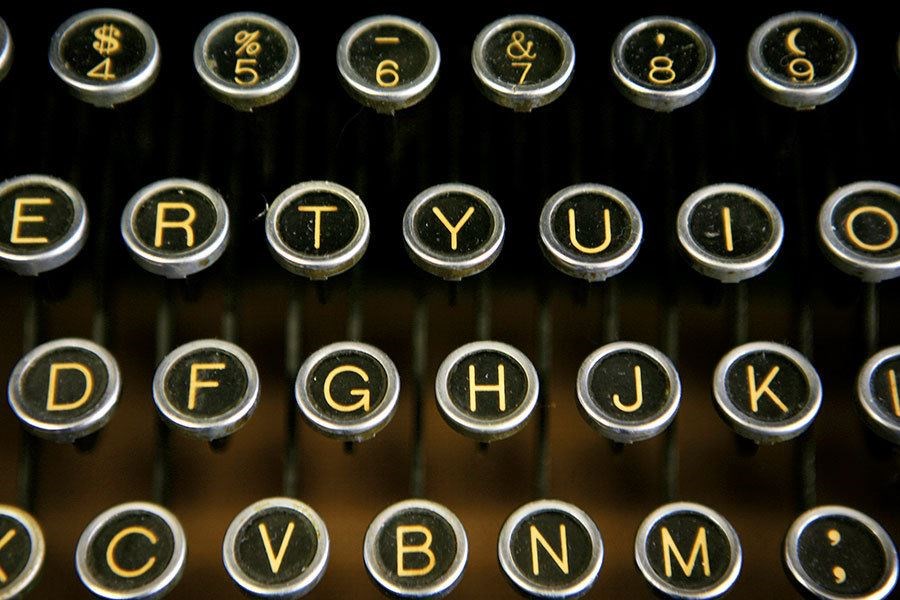Reprinted with permission from The Christian Science Monitor
No wonder kids like it: real molecules of ink hitting real molecules of paper.
Rumor has it some kids with manual typewriters are getting together in the local coffeehouse. They’re going to type letters, put stamps on envelopes, and mail them. They are thrilled to pieces. They report feeling a greater sense of accomplishment in creating a physical document by hammering on keys and slinging the carriage-return thingy.
 keyboardMelanie Stetson Freeman/Staff/fileIt’s a little odd to feel nostalgic for something you never experienced, but I can relate. I’ve often wished that I could feel as excited about an orange in my Christmas stocking as my foremothers did. I can’t do it. Oranges are too available and the wonder of them has waned.
keyboardMelanie Stetson Freeman/Staff/fileIt’s a little odd to feel nostalgic for something you never experienced, but I can relate. I’ve often wished that I could feel as excited about an orange in my Christmas stocking as my foremothers did. I can’t do it. Oranges are too available and the wonder of them has waned.
But the typewriter is a decidedly cool invention. There is a tactile reward: The keys have raised, round rims in which your resting fingertips feel as special as pie filling. There’s the acoustical reward from the “ding!” when you’re at the end of a line. There’s a pungent taste to the onionskin paper. (Not really, I made that part up.)
I learned to type very well in eighth grade, and it’s one thing that stayed learned. At my peak I was good for about 125 words a minute with three mistakes per page, and that kept me employed between worthier employments. My mother, on the other hand, typed 135 words a minute with three mistakes a year.
You could hear the mistakes if you were nearby. There’d be her usual cicada-buzz of typing, and then abruptly it would stop, and you’d hear this little “tsk.” Mom was very valuable to her employers, although not in a way they showed monetarily, times being what they were. Not only did she not make typos, but she spelled everything correctly and straightened out the grammar as she blasted out a letter. A woman with a mind and mad typing skills who made her bosses look good was a very valuable commodity back then, but of course she had to quit in order to cook up my sister and cook for my father and, later, contend with me, even though I was not in the original plan.
Typing really well involves getting a good even rhythm. You don’t want to syncopate because you could accidentally hammer on two keys at once and then they have to duke it out in front of you, and you have to get right in there and peel them apart. And it takes a stout bit of power to get the keys all the way up to the page and printing properly. If you’re thrifty like my mom was, you’d reuse your ribbons and have to type harder and harder to get the letters to show up. Also, your typewriter was likely to shift to the right with every swing of the carriage return, and if you didn’t happen to notice it getting farther away from the page you were copying, it could walk right off the table. These, I suspect, are the kinds of things that appeal to the young people doing type-ins at the coffeehouse. Real problems, real molecules of ink hitting real molecules of paper, everything in front of you and accountable to you, and not this spookiness where your content turns to vapor and flies across the planet in some way you cannot fathom.
There were a number of conventions associated with typewriters that had to be unlearned when word processors marched onto the scene. No longer did one have to make an exclamation point by hitting the period, backspacing, and topping it with an apostrophe. Exclamation-point abuse was born with personal computers. Other than that, everything else got better.
Still, I cheer the coffeehouse crowd with their Underwoods under their arms and their Olivettis at the ready. I think I’ll walk in, scowl, and say, “What in tarnation is going on in here?” Then I’ll see how much antique onionskin I can unload.
Page created on 11/27/2018 8:49:12 AM
Last edited 11/27/2018 9:02:56 AM
